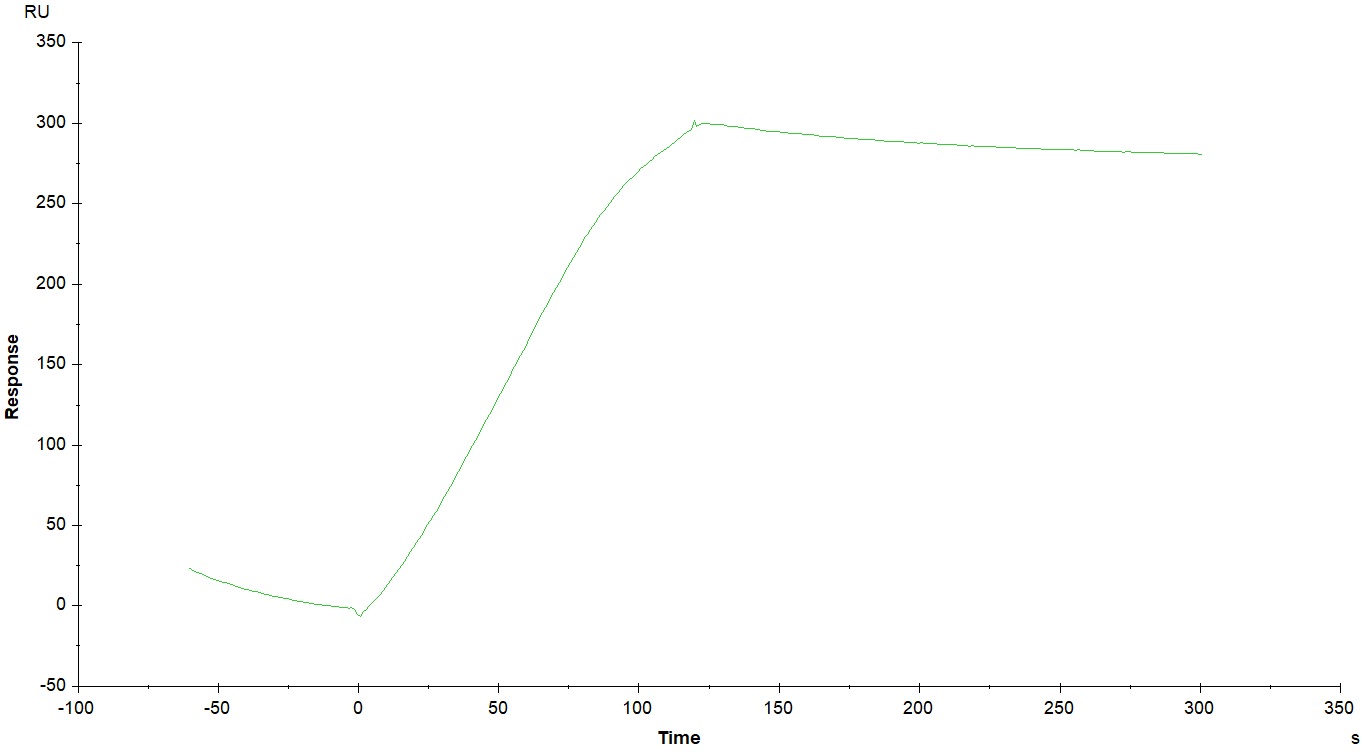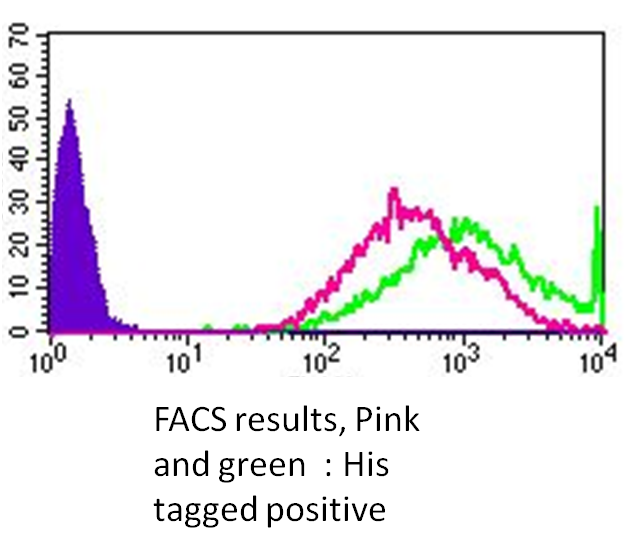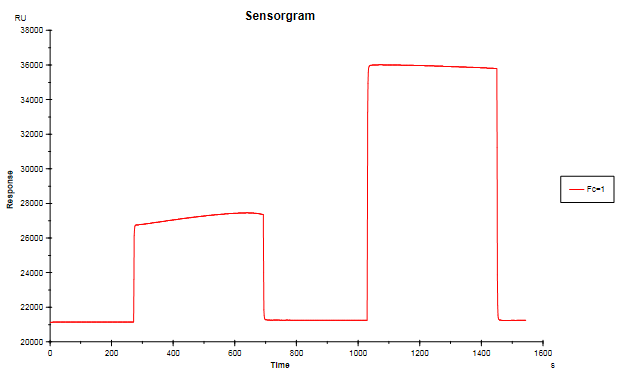Recombinant Mouse PD-L1/B7-H1 His-tag Protein, CF Summary
Product Specifications
Phe19-His239, with a C-terminal 6-His tag
Analysis
Product Datasheets
Carrier Free
CF stands for Carrier Free (CF). We typically add Bovine Serum Albumin (BSA) as a carrier protein to our recombinant proteins. Adding a carrier protein enhances protein stability, increases shelf-life, and allows the recombinant protein to be stored at a more dilute concentration. The carrier free version does not contain BSA.
In general, we advise purchasing the recombinant protein with BSA for use in cell or tissue culture, or as an ELISA standard. In contrast, the carrier free protein is recommended for applications, in which the presence of BSA could interfere.
9048-B7
| Formulation | Lyophilized from a 0.2 μm filtered solution in PBS. |
| Reconstitution | Reconstitute at 400 μg/mL in PBS. |
| Shipping | The product is shipped at ambient temperature. Upon receipt, store it immediately at the temperature recommended below. |
| Stability & Storage: | Use a manual defrost freezer and avoid repeated freeze-thaw cycles.
|
Scientific Data
 View Larger
View Larger
When Recombinant Mouse PD-L1/B7-H1 is immobilize at 25 ng/mL, it binds Recombinant Mouse PD-1 Fc Chimera (Catalog # 1021-PD) with an ED50 of 8-40 ng/mL.
Reconstitution Calculator
Background: PD-L1/B7-H1
B7-H1, also known as PD-L1 and CD274, is an approximately 65 kDa transmembrane glycoprotein in the B7 family of immune regulatory molecules (1). Mature mouse B7-H1 consists of a 221 amino acid (aa) extracellular domain (ECD) with two immunoglobulin-like domains, a 21 aa transmembrane segment, and a 30 aa cytoplasmic domain (2). Within the ECD, mouse B7-H1 shares 73% and 86% aa sequence identity with human and rat B7-H1, respectively. B7-H1 is expressed on inflammatory-activated immune cells including macrophages, T cells, and B cells (2-5), keratinocytes (6, 7), enothelial and intestinal epithelial cells (6, 8), as well as a variety of carcinomas and melanoma (9, 10). B7-H1 binds to T cell B7-1/CD80 and PD-1 (5, 6, 10-13). It suppresses T cell activation and proliferation (3, 6, 12, 14) and induces the apoptosis of activated T cells (9). It plays a role in the development of immune tolerance by promoting T cell anergy (5, 12) and enhancing regulatory T cell development (14). B7-H1 favors the development of anti-inflammatory IL-10 and IL-22 producing dendritic cells (3, 8) and inhibits the development of Th17 cells (14). In cancer, B7-H1 provides resistance to T cell mediated lysis, enhances EMT, and enhances the tumorigenic function of Th22 cells (4, 7, 10, 13).
- Ceeraz, S. et al. (2013) Trends Immunol. 34:556.
- Tamura, H. et al. (2001) Blood 97:1809.
- Chen, L. et al. (2007) J. Immunol. 178:6634.
- Kuang, D.-M. et al. (2014) J. Clin. Invest. 124:4657.
- Tsushima, F. et al. (2007) Blood 110:180.
- Mazanet, M.M. and C.C.W. Hughes (2002) J. Immunol. 169:3581.
- Cao, Y. et al. (2010) Cancer Res. 71:1235.
- Scandiuzzi, L. et al. (2014) Cell Rep. 6:625.
- Dong, H. et al. (2002) Nat. Med. 8:793.
- Azuma, T. et al. (2008) Blood 111:3635.
- Butte, M.J. et al. (2008) Mol. Immunol. 45:3567.
- Park, J.-J. et al. (2010) Blood 116:1291.
- Ritprajak, P. et al. (2010) J. Immunol. 184:4918.
- Herold, M. et al. (2015) J. Immunol. 195:3584.
Citations for Recombinant Mouse PD-L1/B7-H1 His-tag Protein, CF
R&D Systems personnel manually curate a database that contains references using R&D Systems products. The data collected includes not only links to publications in PubMed, but also provides information about sample types, species, and experimental conditions.
2
Citations: Showing 1 - 2
Filter your results:
Filter by:
-
T cells use distinct topographical and membrane receptor scanning strategies that individually coalesce during receptor recognition
Authors: E Cai, C Beppler, J Eichorst, K Marchuk, SW Eastman, MF Krummel
Proceedings of the National Academy of Sciences of the United States of America, 2022-08-01;119(32):e2203247119.
Species: Transgenic Mouse
Sample Types: Whole Cell
Applications: Bioassay -
Blockade of Tumor-Expressed PD-1 promotes lung cancer growth
Authors: S Du, N McCall, K Park, Q Guan, P Fontina, A Ertel, T Zhan, AP Dicker, B Lu
Oncoimmunology, 2018-01-29;7(4):e1408747.
Species: Mouse
Sample Types: Whole Cells
Applications: Bioassay
FAQs
No product specific FAQs exist for this product, however you may
View all Proteins and Enzyme FAQsReviews for Recombinant Mouse PD-L1/B7-H1 His-tag Protein, CF
Average Rating: 5 (Based on 13 Reviews)
Have you used Recombinant Mouse PD-L1/B7-H1 His-tag Protein, CF?
Submit a review and receive an Amazon gift card.
$25/€18/£15/$25CAN/¥75 Yuan/¥2500 Yen for a review with an image
$10/€7/£6/$10 CAD/¥70 Yuan/¥1110 Yen for a review without an image
Filter by:



